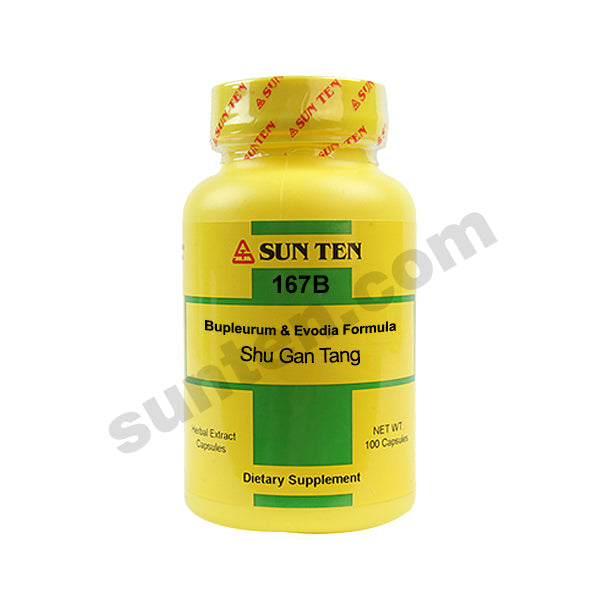Shu Gan Tang
Bupleurum & Evodia Formula Capsules | 疏肝湯
Practitioners: Please LOGIN to view the wholesale price. This item can only be purchased by a licensed practitioner. Find a practitioner
✅ Vegetable Capsule
Please Note: This product contains tree nuts and may not be suitable for individuals with nut allergies. (tao ren)
Ingredients: Bupleurum root (chai hu), Carthamus flower (hong hua), Chih-ko fruit (zhi ke), Cnidium root (chuan xiong), Citrus rind (chen pi) (blue), Coptis root (huang lian), Evodia (wu zhu yu), Persica (tao ren), Tang-kuei root (dang gui), White peony root (bai shao).
| Mandarin: 疏肝湯 Pin-Yin: Shu Gan Tang English: Bupleurum & Evodia Formula Romaji: Sokan To Kanji: 疎肝湯 Kampo: No |

